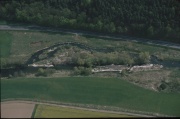Difference between revisions of "Cölbe"
(→Cölbe) |
|||
| Line 1: | Line 1: | ||
| − | =Cölbe= | + | =Lahn Cölbe= |
<googlemap version="0.9" lat="50.863056" lon="8.790278" zoom="13" width="100%" height="400" scale="yes" overview="yes" toc="no" controls="large"> | <googlemap version="0.9" lat="50.863056" lon="8.790278" zoom="13" width="100%" height="400" scale="yes" overview="yes" toc="no" controls="large"> | ||
Revision as of 14:07, 28 May 2014
Lahn Cölbe
Key features of the case study
Site description
Attention: The information of this case study was compiled by Kathrin Januschke, Daniel Hering, University of Duisburg-Essen.
The project was not monitored by the organization which implemented the measures. However, the site has been intensively monitored in a research project of the University of Duisburg-Essen. The results, including monitoring results of another 6 sites have recently been published: Jähnig, S. C., Brunzel, S., Gacek, S., Lorenz, A. W. and Hering, D. (2009): Effects of re-braiding measures on hydromorphology, floodplain vegetation, ground beetles and benthic invertebrates in mountain rivers. Journal of Applied Ecology, 46, 406-416.
Since data prior to restoration were not available, Jähnig et al. (2009) used upstream non-restored sites as controls (“space for time substitution”). The monitoring was carried out in 2004 and 2005 (4-5 years after implementation of the measures at the Lahn Cölbe site). The results show that mesohabitat diversity (e.g., channel side arms, bars) did increase. The share of the rare microhabitats did also increase. However, the total number of microhabitats did not increase, i.e. the number of different substrate types was similar to the non-restored sites. The biological monitoring results do reflect the hydromorphological changes. The strong increase in the number of floodplain vegetation species is due to the creation of additional mesohabitats, while riparian ground beetles react mainly to the increased availability of the mesohabitat “gravel bar”. The small and insignificant response of benthic invertebrates to restoration measures is due to the comparatively small changes in aquatic microhabitat composition. Besides the differences between the morphological changes of meso- and microhabitats, differences between the organism groups may be due to different dispersal abilities and re-colonization potentials. Moreover, although mesohabitat channel morphology has improved, even the restored sites do markedly differ from near-natural conditions, e.g. in respect to the amount of large wood.
Measures selection
Success criteria
Ecological response
Hydromorphological response
Monitoring before and after implementation of the project
Socio-economic aspects
Contact person within the organization
Extra background information
References
Related Measures
- Widen water courses
- Allow/increase lateral channel migration or river mobility
- Shallow water courses
- Initiate natural channel dynamics to promote natural regeneration
- Introduce large wood
- Remove bank fixation
- Recreate gravel bar and riffles
- Remove bank fixation
- Lower river banks or floodplains to enlarge inundation and flooding
- Remove hard engineering structures that impede lateral connectivity
